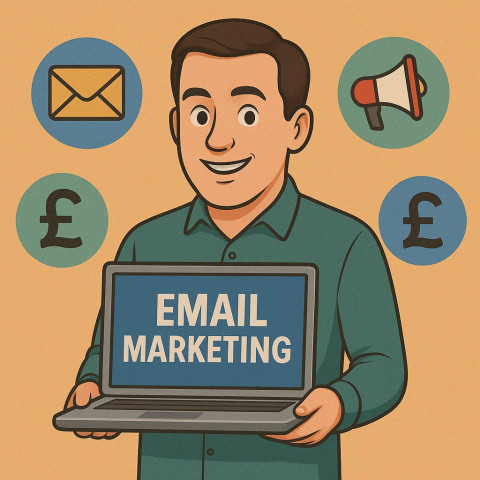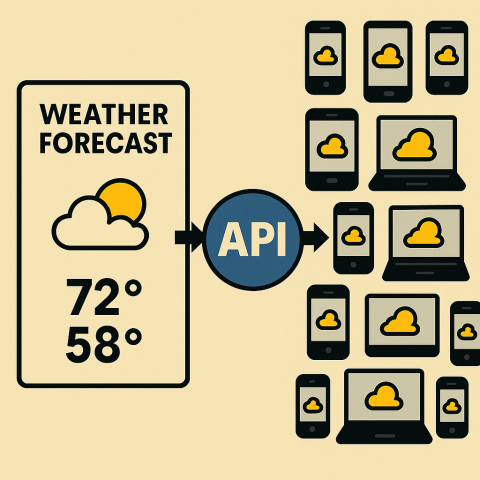The definitive guide to building a Minimum Viable Product (MVP) in 2024
Building an MVP is a critical step in the lifecycle of a startup or any new product development within an existing business, validating your business idea with minimal resources. The concept of an MVP has gained widespread acceptance because it allows companies to test, learn, and iterate their ideas in the market with minimal risk and investment.
In this article we will guide you through the process of creating an MVP, emphasising practical steps and strategies to ensure you are well-equipped to navigate the complexities of your MVP development, ensuring your efforts yield valuable insights and set a solid foundation for your product's future.
Understanding the MVP
An MVP is the simplest version of your product that enables you to gather validated learnings about customers, with the least effort. It’s about finding the quickest path to offer a solution to your target market and learning from their interactions with your product. The key is to focus on the core functionality that solves the main problem for your target audience, avoiding the trap of adding too many features too soon.
Step 1: Identify Your Target Market and Understand Their Needs
The first step in creating an MVP is to clearly define who your target customers are and understand the problems they face that your product will solve.
This involves:
- Conducting Market Research:
- Use online resources, surveys, and market reports to gather data about your target market and industry trends.
- Customer Interviews:
- Direct conversations with potential users are invaluable. They provide insights into the customer’s needs, preferences, and pain points.
- Creating Personas:
- Develop detailed customer personas that represent your ideal users. This helps in making informed decisions about product features and design.
* Define your idea with precision.
* Understand the problem your product aims to solve.
*Identify your target audience and their needs.
Step 2: Define Your Value Proposition
Your value proposition is a clear statement that explains how your product solves customers' problems or improves their situation, the specific benefits, and why they should buy from you over the competition. It should be concise and compelling, highlighting the unique value your product brings.
* Identify the core features that are essential to solving the identified problem.
* Avoid feature bloat; focus on functionalities that provide value.
* Prioritise features based on their importance to users.
Step 3: Prioritise Features for Your MVP
With a clear understanding of your customer's needs and your value proposition, you can now identify the features your MVP will need. Focus on the core features that directly address the main problem your product aims to solve. Use prioritisation frameworks like MoSCoW to classify features into must-haves and nice-to-haves, concentrating on the former for your MVP.
* Create a prototype or mock-up of your MVP.
* Visualise the product's design and functionality.
*Seek feedback on the prototype's usability and appeal
Step 4: Choose the Right Technology
Selecting the right technology stack for your MVP is crucial.
Considerations include:
- Scalability:
- Can the technology grow with your product?
- Availability of Skills:
- Are there developers available with the necessary skills?
- Development Speed:
- How quickly can you bring your MVP to market?
- Cost: What are the costs associated with the technology, both upfront and ongoing?
Step 5: Develop Your MVP
With a clear plan in place, it’s time to start the development process. Embrace agile methodologies, allowing for flexibility and rapid iteration based on feedback. Keep the development focused on the prioritised features to ensure a timely launch.
* Develop your MVP, starting with the core features.
* Keep it simple; aim for a basic, functional version of your product.
* Avoid overcomplicating or overengineering at this stage.
* Keep the design simple and focused on core functionalities. Avoid unnecessary features that can clutter the experience.
Step 6: Test and Validate with Real Users
Once your MVP is ready, release it to a small group of Early Adopters who align with your target market.
Early adopters play a critical role in the MVP process. They are the first users of your product, willing to take a chance on your solution despite its imperfections. Engaging with them can provide invaluable insights because they are often more forgiving and willing to provide constructive feedback.
- Identify Early Adopters:
- Look for users who have shown interest in your solution, perhaps those who have signed up for your mailing list or have followed your development blog.
- Create a Community:
- Use social media, forums, or a dedicated user group to keep early adopters engaged, making them feel part of your product's journey.
- Leverage Their Feedback:
- Encourage detailed feedback and suggestions, their insights can guide significant improvements and new features for your MVP.
- Use feedback to identify how well the MVP addresses their needs
- User Testing Sessions:
- Observe how real users interact with your product and where they encounter difficulties.
- Surveys and Feedback Forms:
- Collect quantitative and qualitative feedback on user satisfaction and areas for improvement.
- Pay attention to usability issues, suggestions, and pain points.
* Evolve your MVP based on user feedback and changing market conditions.
* Continuously adapt to meet evolving user needs and expectations.
* Consider adding new features to enhance your product.
* Implement a systematic feedback loop within your MVP.
* Allow users to provide feedback directly from the platform.
* Show users that their opinions matter and that you're actively working to improve the product.
Step 7: Measure Success and Iterate
Establish Key Performance Indicators (KPIs) to measure the success of your MVP. These could include: user engagement metrics, conversion rates, and customer feedback scores.
Use these metrics to make informed decisions on whether to repeat, pivot, or scale your product.
Continuously refine the design based on user feedback and analytics data. This iterative process helps improve the user experience over time.
Analyse the feedback collected from users.
* Identify common themes and areas for improvement.
* Prioritise feedback based on its impact on user experience.
* Make necessary adjustments to your MVP based on user feedback.
* Improve existing features, fix issues, and enhance user interface.
* Be open to changing directions if feedback suggests a pivot is needed
* Maintain open communication channels with your user community.
* Keep your finger on the pulse of user preferences and emerging trends.

Step 8: Plan for the Future
Based on the learnings from your MVP, plan the next stages of your product development. This could involve adding new features, enhancing existing ones, or possibly pivoting your approach based on user feedback. Also, consider the broader business model and how the product fits into your overall strategy.
Step 9: Integrate Analytics Tools
To make informed decisions about your product, you need data. Integrating analytics tools into your MVP can provide you with detailed information on how users interact with your product.
- User Behaviour:
- Track how users navigate your product, which features they use most, and where they drop off.
- Performance Metrics:
- Measure load times, error rates, and other technical metrics to ensure your product delivers a smooth user experience.
- A/B Testing:
- Use A/B testing to experiment with different features, designs, and user flows to see what works best.
* Test one variable at a time to determine what resonates best with users.
* Dive deeper into performance analytics.
* Analyse user engagement patterns, conversion funnels, and user flows.
* Use advanced analytics to uncover insights and areas for further optimisation.
Step 10: Monetisation Strategy
Develop a clear monetisation strategy that aligns with your target audience.
There are several ways to monetise your product and boost your profits, here are some examples:
- Offer a Premium Version of Your Product.
- Offer a Subscription Model.
- Create a Unique Marketplace for Your Product.
- Use Affiliate Marketing.
- Charge for Access to Your Content.
- Offer Add-on Products and Services.
- Create a Loyalty Program.
- Sell Ad Space.
Step 11: Internationalisation
* Consider internationalisation to cater to a global audience.
* Translate your MVP into multiple languages and adapt it to different cultures.
* Expanding your user base beyond borders can open up new opportunities for growth.
Step 12: Community Building
* Foster a sense of community around your MVP.
* Create a forum or social media group where users can connect, share experiences, and provide feedback.
* Engaging users in discussions can strengthen their loyalty.
Step 13: User Education
* Offer comprehensive user education resources.
* Create tutorials, guides, and webinars to help users make the most of your MVP.
* Empower users to become experts in using your product.
* Expand your user support resources as your MVP grows.
* Provide multiple channels for support, such as live chat, email, and knowledge bases.
* Prompt and effective support can significantly impact user satisfaction.
Step 14: Personalisation
* Explore personalisation features to enhance user experiences.
* Tailor content, recommendations, or features based on individual user preferences and behaviour.
* Personalisation can increase user engagement and satisfaction.
Step 15: User Loyalty Programs
* Consider implementing user loyalty programs.
* Reward loyal users with exclusive features, discounts, or early access to new features.
* Building a loyal user base can drive long-term success.
Step 16: Prepare for Scale
If your MVP is successful, you need to be ready to scale your product. This involves both technical scalability and the ability to meet increasing customer demand.
- Technical Infrastructure:
- Ensure your technology stack can handle increased loads. Consider cloud services that offer scalability.
- Operational Scaling:
- Plan how you will scale operations, customer support, and marketing efforts to keep up with growth.
* Expand your user base through marketing and outreach.
* Seek additional funding if required for growth and development.
* Ensure your infrastructure, technology stack, and team can handle increased demand.
Step 17: Secure Funding
With a validated MVP and a clear path for growth, you may need additional funding to scale your product.
Use data from your MVP when pitching to investors, enabling the demonstration of market validation and the potential for growth. A successful MVP can be a powerful tool in convincing investors.
If you're in pursuit of external funding, state precisely how much capital you need and develop a clear, detailed plan illustrating exactly how the funds will be allocated. Specify whether the funding will support product development, marketing, salary, or other uses and indicate any future funding rounds.
If you are a new start-up or an existing business which needs external funding, include a Capital Requirements plan to the Financial section of your Business plan.
The capital required can be for long term requirements such as machinery or vehicles or short term for things like materials and current expenses.
Whatever the funding is required for you will need to show financially that it’s viably required and you can pay it back.
- Detail the requirements for the capital
- How much is invested in the Business already and by who
- What the money will be spend on
- How it will help the business reach its goals
- How much the monthly payments will be
- What the interest rate is
- How long it will take to pay it back
Step 18: Strategic Partnerships
* Explore strategic partnerships or collaborations with complementary products or services.
* Partnerships can help you access new user segments and markets.
* Choose partners that align with your MVP's values and goals.

Conclusion
Building a successful MVP involves a series of strategic steps, from idea clarity to continuous user engagement. By following this roadmap, you can increase your chances of creating a thriving product that effectively addresses real-world problems. Remember, the MVP journey is iterative and requires adaptability, responsiveness to user feedback, and a commitment to ongoing improvement.
Remember that an MVP is a dynamic project that evolves over time, so stay agile, listen to your users, and continually seek ways to improve and expand your offering. Your commitment to delivering value will be the key to your MVP's triumph.

Mailchimp Alternatives Guide 2025
Is Mailchimp still the best FOR EMAIL MARKETING? Or are UK businesses find...
5 min read

The Hidden Cost of Poor System Integration
Why Poor Integration Between Systems Is Holding Your Business Back And How...
8 min read

Admin Overload: The Silent Business Killer
The cost of manual, repetitive admin tasks In countless small and medium-s...
3 min read


